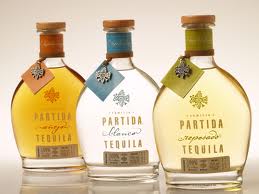Recently, a VERY knowledgeable mezcal market participant hypothesized the following theory: all of the variations and multiple products being pushed out by individual brands is confusing to the average mezcal consumer and potential mezcal consumers. This person felt there were too many tobalas, pechugas, madrecuixes, etc, and that the overwhelming number of choices led to no choice being made. It’s like all those great Taylor Swift songs: how can you choose which one to listen too?
 Could all the mezcal choices lead to drinker inaction? Let’s start by looking at tequila. With tequila, there are more than 1,000 brands, but virtually every one of them has the same three products: silver, reposado, and anejo. And it is all blue agave by definition. Simple. These 3 expressions are readily understood by most tequila consumers, and even if they do not know this, people are rarely confused. You walk into a bar, you see tequila behind the bar, and at most, you see 3 bottles of the same brand, but even that is not at every bar.
Could all the mezcal choices lead to drinker inaction? Let’s start by looking at tequila. With tequila, there are more than 1,000 brands, but virtually every one of them has the same three products: silver, reposado, and anejo. And it is all blue agave by definition. Simple. These 3 expressions are readily understood by most tequila consumers, and even if they do not know this, people are rarely confused. You walk into a bar, you see tequila behind the bar, and at most, you see 3 bottles of the same brand, but even that is not at every bar.
Now let’s talk about what happens with mezcal. Some restaurants or bars will carry the full line of certain brands, so when you walk in, you may see 8 bottles of Del Maguey, 5 bottles of Pierde Almas, 3 bottles of Mezcal de Leyenda, 5 bottles of Fidencio, and so on. Almost all of these are jovens made with different varieties of agave. You may see espadin, tobala, madrecuixe, tobasiche, tepeztate, sierra negra, mexicano, americana, bicuishe, cuise and even pechuga (not a varietal but a different expression) and there are many more.

Take Pierde Almas, for example, they have 3 jovens (maybe more); an espadin, a tobala, and a do-ba-daan. Believe me, I am not knocking their mezcal – it is good stuff and I like the multiple varietals, but the point is that I am perhaps the exception, not the mezcal-drinking rule. I love to try all the varietals and contrast and compare them, but I am card carrying mezcal geek.
But when the progressive tequila drinker is looking for something new and he is confronted with 8 bottles of Del Maquey does he simply not pursue mezcal because he is intimidated by the options? I don’t know the answer but I could see some shying away due to the perceived complexity of mezcal. This is certainly what my informed mezcal friend believes (the one who got me thinking about this post).
I think the counter-argument is that perhaps most people don’t know about all this stuff and simply know they are drinking mezcal. Just like many tequila drinkers may not know or appreciate the brand they are drinking or even the difference between a silver, repo, or anejo (yes, those sad people are out there).
To gain further insight, I posed this question to Matt Resler, resident mezcal expert and bar manager at Empellon in NYC. He has the behind-the-bar perspective as he is pouring and educating people on mezcal on a daily basis. While he probably had not considered this theory prior to my question, his initial thoughts were that the proliferation of varietals was NOT confusing the average drinker at his bar. I really wish I could remember what else he said, but I was 2/3rds of the way through the all-mezcal cocktail that he had poured me, so the rest just kind of drifted away….yes, one cocktail. All mezcal. All awesome.
So I have two opposing opinions from two people who know a lot about mezcal. What do I think (I have a PhD after all)? I think they are both right (cop out!). I don’t think the drinker who wants to explore mezcal in a bar is intimidated to the point where they don’t ask for mezcal or are not willing to try it. But I also think, that until the mezcal category is established, that mezcal would possibly be better off if it followed the simple tequila formula of joven-reposado-anejo. People like me wouldn’t be as happy about such a limiting line-up, but it might make the story easier to follow.
Do you have an opinion? Do you think the abundance of varietals creates confusion and stifles category growth? Or is it the more the merrier, and more bottles on the shelf enhances mezcal awareness?
As always, please weigh in! In the meantime, drink mezcal!


I’m a bartender in central Pennsylvania, where mezcal is only slowly taking hold as a mere option, but every bar has tequila–usually the big-box brands like Patron, et.al. And it still shocks me every time I have an experienced margarita drinker not know what I’m talking about when I ask them if they prefer a silver, repo- or anejo. “Oh, I don’t know what that means.” (And good on them for admitting it: but the intellectual crowd we attract–because we’re adamantly not a sports-bar–are more than willing to own up to their lack of knowledge.) That said, their ignorance rubs me the wrong way.
How can you be 50 years old, drink margaritas regularly and not know that tequila comes in 3 or 4 “levels” of aging? So I ask, “Do you want ‘bright and fruity’, ’round and vanilla’ or ‘deep and woodsy’?” And they stare like a deer in headlights.
I’m 47 yrs-old, been drinking since I’m 21. I was a cocktail nerd before we were allowed to be cocktail nerds. But I knew the difference between silver, repo- and anejo by the time I was 25.
Where am I going with this? I say that folks who keep their heads buried in the dirt will continue to do that. Because everybody seems to have had that “one time” with tequila (or mezcal… or gin) that set them back. Those people will never catch up because they live in FEAR. Every. Day.
You can only educate the willing Initiates! And we can’t educate without a full spectrum of agave spirits that point to the Path.
Living where I live, and managing the bar in an Asian establishment, we’re only going to be carrying a couple of mezcals. But the ones we have are dialed in to complement the kinds of cocktails that pair with sushi and Sichuan cuisine–nearly polar opposites, yes. For our situation, we stick to the dichotomy of “smoky or funky?”
But with authentic taquerias finally opening up and giving the “restaurantes” a run for the money, I think mezcal could be poised to make a leap really soon here. And if it does, I’ll be right there slinging it…. HOPING MY BRAND REPS WILL EDUCATE ME and not just try to sell me something in their portfolio!
Thanks for all these thoughts! I am not sure how you even found this post since I wrote many years ago. Much of my mezcal view is in NYC and several other major cities – mezcal is thriving in the population centers. So it is interesting to hear what is happening in central PA. I love your perspective and know that mezcal needs you! It needs the educators who are on the front lines with consumers. I am sure it takes all your patience when people don’t even know the difference between tequila’s silver, repo, and anejo! Ugh. Slip a mezcal into a margarita now and then and see what happens. That has been a gateway for me as a way to intro people to mezcal. Keep up the good work and let me know how I can help!
Hey,
great post, always insightful. I believe whisk(e)y has set the way that there can be thousands upon thousands of different varieties, styles, ages, etc. Mezcal is fine where it is.
I hear you and agree. I just hope it is not too soon. Most people barely know what mezcal is so I wonder if the category should be better defined before the tree sprouts a million branches. But it is too late now really – so I hope you are right!
Mezcal may be more “confusing” than tequila, but is far, far less confusing than wine. And people drink a lot of wine, despite the infinity of grape varieties, terroirs, vinification techniques, aging techniques…
So no, i don’t see a problem there, only an interesting spirit.
Here here. I like the comment. Thanks!
I agree with the fact that having multiple varieties may cause too much confusion to the mass market and thus limiting its growth..but is that a bad thing?
Isn’t this a component that makes Mezcal so attractive to its consumers?
It is a drink that has many intricacies and secrets that not just anyone can uncover. I’ve always seen it as a drink that cares more about quality than quantity which might not always be attractive to investors that want to see its massive growth but I believe true Mezcal lovers would never want it to follow in the steps of Tequila. Not to put down Tequila by any means (it is my liquor of choice), but I would be deeply saddened to see Mezcal being chugged by college students across the country, or having a poor quality Mezcal being sold for $50 a bottle just because of marketing tactics as Tequila (like Patron) often does.
I am excited to see the future growth of Mezcal globally but I hope it doesn’t mean surrendering its integrity.
I couldn’t have said it better myself! But keep in mind, that mezcal producers and companies want to make money. And to make money, production and sales have to grow to the point where these brands are interesting to the big spirit companies. Striking the right balance between sustainable growth and artisanal production is the challenge that some of these brands will face. We all hope they figure it out so that mezcal can stay true to its heritage. Thanks for contributing!
If each bottle were required to have a definition of what their style name literally means might help. Literal translation of terms is a great way to help educate a new user about products with which they hope to become familiar. And it helps them make a more educated purchase next time around.
I think what you are suggesting would indeed be helpful. The only body that could put such a regulation in place would be COMERCAM, which regulates mezcal in Mexico. Don’t count on that happening soon, if ever. A few labels, such as Del Maguey’s Tobala, do include an explanantion as to what tobala is and where it is found. But this is the rare execption (just like tobala itself!). In the meantime, ask knowledgeable bartenders and read things online – like Mezcal PhD! Mezcal is a huge and complex onion, and the more you peel back the layers, the more fascinating you will find it to be. That goes for both drinking it, and learning about the nuances, production, and history. Thanks for commenting.
Yes, there is confusion in the mass mezcal market, but the masses are confused anyway so not to worry.